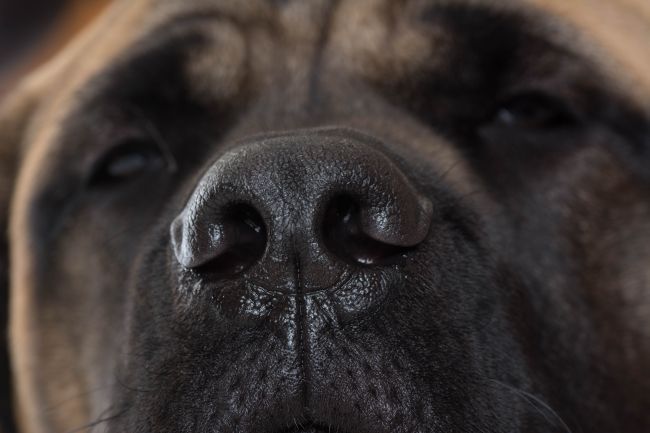 For centuries humans have pondered whether or not dog sense includes the ability to detect fear. Numerous testimonies describe how dogs can behave increasingly aggressive when approached by a frightened human, almost as if they knew they had the upper hand. Similarly, owners have described a “sixth sense” possessed by their dogs who knew to come sit close by, lick their hand, or comfort them after receiving a tragic phone call, or while they were watching a scary movie. Whether this may have been coincidental or not, it certainly seems possible that canines can tell when a human feels afraid.
For centuries humans have pondered whether or not dog sense includes the ability to detect fear. Numerous testimonies describe how dogs can behave increasingly aggressive when approached by a frightened human, almost as if they knew they had the upper hand. Similarly, owners have described a “sixth sense” possessed by their dogs who knew to come sit close by, lick their hand, or comfort them after receiving a tragic phone call, or while they were watching a scary movie. Whether this may have been coincidental or not, it certainly seems possible that canines can tell when a human feels afraid.
Factors to consider
Body language: When frightened, humans tend to appear wide-eyed, with a clenched jaw or fist, and perhaps a minor tremble of the hands. Our voices crack, breathing quickens, and beads of sweat break out on our foreheads and jittery palms. Whether or not we realize it, all of these are noticeable signals that indicate to the dog that a human is anxious, nervous, or stressed.
Canine observation: The Japanese University at Azabu conducted a study about dogs reacting to pictures of blank human stares in comparison with smiling faces. Since the dogs were able to distinguish between differing facial expressions; how much easier would it be for canines to read postures, movements, shifting stances and fidgety gestures?
Physical Possibilities
No study has effectively proven that dogs noses pick up a specific scent correlating to the human emotion of fear. However, there are physical occurrences which provide evidence that fear detection is in fact possible. Most people understand fear to be an emotional response that remains within the confines of the human mind. One aspect of experiencing fear, which is often overlooked, is the physical element involving our hormones. When deeply happy, blissful and content, humans excrete the hormone dopamine; likewise when terrified, stressed or in panic-mode, we release serotonin. It is possible that these hormones permeate through human pheromones and sweat glands, and can be recognized by dogs. If this were proven to be the case, then it would warrant a claim that canines could smell when someone is afraid.
This concept is supported by scientists such as Nancy Diehl of Penn State who affirms that animals can detect non-volatile pheromones through the olfactory system, which is how they can tell if another animal is ready to mate, or is feeling aggressive or territorial. When in contact with other animals, canines can “read” or assess them based on the aroma of their pheromones.
Further to this point, a study in 2002 at the University of Vienna proved that human sweat changes in scent based on fear they experience. Women who watched horror movies would sweat more heavily, emitting distinctly stronger odors compared with women who watched neutral/comedic films. As dogs have a heightened ability to identify and trace smells, it certainly seems reasonable to suppose that they can detect the difference between “happy” or “healthy” sweat, and that of the panic/stress/fear pheromones that humans release.
In conclusion, since humans release strongly odorous fear-pheromones, coupled with dogs being able to observe human emotion via body language, it is seems intuitive that canines can sense fear in humans. Next time your friend says “Hey man, watch out, that dog can smell fear,” you might have some interesting considerations to contribute!

